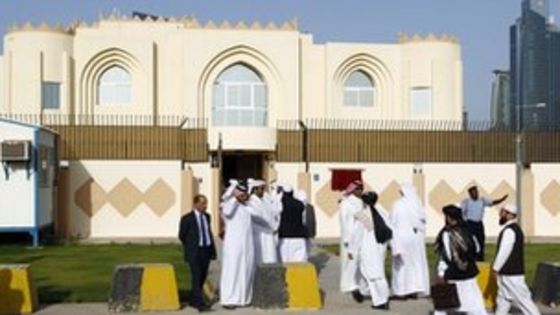Iranian general: We formed Shiite army to fight in Iraq, Syria and Yemen
Retired General Mohammad Ali Falaki, who is currently one of the Iranian forces leaders in Syria, has recently revealed that Iran has formed a “Shiite Liberation Army” led by Quds Force commander, General Qassem Soleimani.
The Quds Force also known as Pasdaran in Persian is a special forces unit of Iran’s Revolutionary Guards Corps (IRGC) and is responsible for the Islamic Republic’s extraterritorial operation.
“The Shiite Liberation Army is currently fighting on three fronts – Iraq, Syria and Yemen,” he told Mashregh news agency, which is close to the IRGC, in an interview published on Thursday.
The retired general said “This army is not only composed of Iranians but it recruits locally from the regions witnessing fighting.”
Falaki, who is leading part of the IRGC fight in Syria to give support to Syrian President Bashar al-Assad’s regime, advised that it was “not wise to directly involve Iranian forces into the Syrian conflict.”
“The role of our personnel should be limited to training, preparing and equipping the Syrians to fight in their areas, ” he added.
Related reading: IRGC’s Plan to Destroy Israel
Eradicating Israel
The general, who is also an Iranian-Iraqi war veteran, also criticized Tehran for its failure to recruit Afghans and not creating a strong group with a tough leader for them on the lines of the Lebanese Hezbollah movement or militia group and its head Hassan Nasrallah.
“We’ve been considering Afghan refugees as dangerous offenders and mercenaries for the past 30 years,” he said. “We did not work on having Afghan groups and leaders like we did with the Shiites of Lebanon, Yemen and Bahrain.”
The UN says there are about 950,000 registered Afghan citizens living in Iran but Tehran puts the total number at around 3 million.
However, Falaki praised sacrifices by the ‘Fatemiyon’ Afghan militias in Syria. He said that they only receive $100 for volunteering to fight there, dismissing reports that they expected to receive large sums of money.
He said the Afghan militias in Syria are “sacrificing their lives for nothing” especially that their government in Kabul has decided to arrest those who fought in Syria, with up to 18 years of jail sentence.
IRGC is still having “trouble when dealing with the Afghans in a friendly and brotherly way, because through Iranian eyes they are seen as inferior.”
He said Pakistanis have their ‘Zeynabioun’ militia group, Iraqis have their ‘Heydarioun’ while the Lebanese have Hezbollah.
Falaki also said there is another division for the Hezbollah, grouping both Iraqi and Syrian militias.
All of these militia groups are fighting under IRGC’s command, all wearing the “same uniform” under the same flag.
SoufanGroup: In mid-August, the U.S. Department of Defense released the summary of its annual report on Iran’s military strategy and capabilities. This year’s report was the first to account for the effects of the July 2015 multilateral nuclear agreement with Iran. Though the summary is brief, it revealed a considerable amount about the strategic threat that Iran continues to pose to the U.S. and its allies, in spite of the nuclear deal.
The clearest conclusion the report reaches is that Iran is developing a wide variety of missiles—as well as an offensive cyber warfare capability—in order to project power far beyond its borders. Iran is developing a large arsenal of short-range missiles, both ballistic and cruise, to be able to deny an adversary control of the waters around Iran. When combined with what the report describes as Iran’s acquisition of naval attack craft—‘small but capable’ submarines, a large arsenal of ‘advanced naval mines,’ and armed unmanned aerial vehicles—Iran is positioned to threaten military and commercial shipping in the vital Strait of Hormuz. About one-third of all seaborne traded oil flows through the Strait daily. Iran’s capabilities call into question longstanding assertions by U.S. and allied naval commanders that Iran does not possess the capability to close the Strait of Hormuz for prolonged periods. The assessment has direct relevance; in mid-August, the IRGC reiterated its threat to close the waterway if Iran were attacked.
Iran’s long-range missiles could place a wide array of U.S. and allied targets within striking distance. Iran’s existing ballistic missile arsenal can already reach all of Israel, as well as U.S. bases in Turkey and southeastern Europe. The Pentagon report mentions Iran’s intent to conduct a launch of its Simorgh space vehicle later in 2016—a vehicle that could be capable of Intercontinental Ballistic Missile (ICBM) ranges (3,000 miles or more) ‘if configured as a ballistic missile.’ An Iranian ICBM would immediately put all of Europe, and perhaps even the U.S. mainland, within Iran’s reach. Still, given Iran’s shortfalls in missile accuracy, these missiles would mainly serve to terrorize civilian populations in targeted countries rather than destroy hardened military targets.
What is particularly noteworthy about Iran’s advances is that the gains have come primarily from within country. Iran’s missile programs began in the 1980s, largely with technology and skills provided by Russia, China, and North Korea. Missile assistance to Iran has been precluded by international sanctions since 2006, although there continue to be reports of Iran-North Korea missile cooperation in violation of these restrictions. Conventional arms sales and military training for Iran were banned in 2010, and remain so until 2020 under U.N. Resolution 2231, which implemented the Iran nuclear deal. While Iran-Russia military cooperation in Syria has deepened and the countries have discussed new arms sales to Iran, Russia has not shown any inclination to violate the resolution outright. The resolution does not prohibit joint military activities such as Russia’s use of Iran’s airbases for bomber strikes or Russia-Iran ground cooperation in Syria.
The Pentagon report also addresses a key question that has clouded the nuclear deal since its inception—how Iran’s regional strategy and activities might change as a consequence of the deal. The report assesses that ‘Iran’s covert activities also are continuing unabated. The Islamic Revolutionary Guard Corps–Qods Force (IRGC-QF) remains a key tool of Iran’s foreign policy and power projection, particularly in Iraq, Syria, Lebanon, Bahrain, and Yemen.’ This assessment contradicts more hopeful assessments that the nuclear deal would moderate Iran’s behavior and suggests that Iran is harnessing its expanding weapons arsenal in efforts to increase its regional influence. Iran’s weapons supplies to its regional allies and proxies have helped keep Syrian President Bashar al-Assad in power; empowered Zaydi Shi’a Houthi rebels in Yemen against a Saudi-led coalition; supported 80,000 Shi’a militia fighters in Iraq; and enabled radical underground Shi’a factions in Bahrain to conduct successful improvised explosive device attacks on security forces. All of these activities have put military and political pressure on Iran’s foremost regional rival, Saudi Arabia, which is undertaking activities opposed to those of Iran in virtually all of these theaters. Iran has been known to provide advanced weaponry to its key proxy, Lebanese Hizballah, in the past. The transfer of even modest amounts of its most sophisticated missiles to Hizballah will likely ensure that any new Israel-Hizballah war could escalate into a regional, and potentially even global, conflagration.
.






 CNN reported Wednesday that Cabrera’s attorney, Stephen Bronis, said $20,000(given to the Clinton-Gore campaign) was not intended to buy protection for drug smuggling.
CNN reported Wednesday that Cabrera’s attorney, Stephen Bronis, said $20,000(given to the Clinton-Gore campaign) was not intended to buy protection for drug smuggling.